Steve Pond's Blog, page 141
May 25, 2025
After That Shocking ‘The Last of Us’ Season 2 Finale Ending, What Happens Next in the Game?
Note: This story contains spoilers from “The Last of Us” Season 2, Episode 7.
The final moments of “The Last of Us” Season 2 are bound to raise questions about what Season 3 will look like.
Season 2 came to a close after a mere seven episodes, right as Ellie (Bella Ramsey) and Abby (Kaitlyn Dever) collided after Joel’s death back in Episode 2. A quick cut to black and the tease of a jump back in time are bound to have fans wondering just where Season 3 is going.
Luckily, this is still all in line with how “The Last of Us Part II” video game played out. Here’s what happens and what to likely expect when Season 3 of the series returns to HBO.
How Season 2 EndedThe second season of “The Last of Us” saw Ellie and Abby finally confront each other – albeit briefly. Much of the finale centered on Ellie and Jesse (Young Mazino) searching Seattle until they hear the WLF have Tommy (Gabriel Luna) pinned down. Jesse leaves to help Tommy while Ellie — still on her revenge streak — continues on searching for Abby.
Her search puts her in direct collision with Owen (Spencer Lord) and Mel (Ariela Barer). She demands they tell her where Abby is and they’ll live because Ellie “isn’t like them.” Owen tries to pull a gun on Ellie but she’s quicker at the trigger and the bullet passes through him and grazes Mel as well. Two more of Abby’s friends die as Ellie flees back to the theater.
She barely has time to check on Dina with Jesse and a returned Tommy before she hears a struggle in the front of the theater. Worrying that Tommy is being attacked, Jesse and Ellie rush through the doors only for Jesse to be killed and Tommy revealed to be held at gunpoint by Abby. She turns the gun on Ellie and fires before we cut to Abby back on the first day Ellie arrived in Seattle.
What Happens Next in Season 3?Hopefully viewers are fans of Abby — which has infamously not been the case — because they’ll be getting a lot more of her in the third season. Like the graphic hinted at in the final moments of the Season 2 finale, the show turned back the clock to Ellie’s first day in Seattle, with the intention of replaying them from Abby’s perspective.
There is a reason Abby was so elusive in Season 2. She was having enough problems of her own as she worked through the WLF and Scars war for the city — all while her friends were being killed off one by one thanks to Ellie.
“We understand that both Ellie and Abby are moving forward in trouble,” showrunner Craig Mazin said in a press conference discussing Season 2 finale. “They are in moral trouble because their certainty is beginning to fail them, and we can see it here with Ellie for sure, because she’s faced with the consequences of the things she’s done and people that didn’t deserve to die, dying. She’s starting to feel maybe a swing of the pendulum, and we don’t know where these two are going to end, but what I would hope the audience feels is that they are not done. They’re not done growing, or they are not done falling. We’ll have to wait and see which it is.”
This is a similar split that happened in the game. After hours of mercilessly hunting down Abby’s friends who witnessed Joel’s death, they were forced to jump back days and play as Abby, seeing her friendships with each person fated to die and her work with Isaac and the rest of the WLF group.
It’s unclear if Season 3 will be entirely focused on Abby’s days in Seattle while Ellie was scurrying about in the shadows, or if it will just be a few episodes in the larger season. But after recent comments from showrunners pointing to the likelihood of a fourth season needed to wrap up the story, it certainly seems possible that Season 3 is Abby heavy and Ellie light.
“There is another side to this story that we have yet to really delve into,” Druckman added. “There’s no question that Abby is the hero of her story … Where we go next? All I can say is it will always be centering somebody, whether it’s Ellie and Dina, or whether it’s Abby and Abby’s relationship with Owen or new relationships. If you play the game, you probably know what I’m talking about. But everything is under the cloud or sunlight of Joel, what Joel did to Abby and what Joel did for Ellie, and that will never change.”
“The Last of Us” Seasons 1-2 are now streaming on Max.
The post After That Shocking ‘The Last of Us’ Season 2 Finale Ending, What Happens Next in the Game? appeared first on TheWrap.
‘The Last of Us’ Season 2, Episode 7 Recap: Where Is Abby?
The “Last of Us” Season 2 finale begins the only way it can — in pain. Jesse (Young Mazino) treats a screaming Dina (Isabela Merced) by removing the crossbow bolt that pierced her leg in “Feel Her Love” and deduces, through her insistence that she “can’t die” and refusal of any alcohol to numb the pain, that she is pregnant with his child. Ellie (Bella Ramsey) makes it back to their theater shelter hours later and immediately checks on Dina, who in turn washes Ellie’s wounded back. Ellie recounts her encounter with Nora (Tati Gabrielle), informing Dina that all the former Firefly told her about Abby’s (Kaitlyn Dever) whereabouts is that she is by a “wheel” and “whale.”
“I just kept hurting her,” Ellie says, shocked by the violence she herself unleashed. When Dina says Nora may have gotten what she deserved, Ellie replies, “Maybe she didn’t,” before revealing the truth about why Nora, Abby and their friends hunted down Joel (Pedro Pascal) in the first place. In a moment of dramatic clunkiness, “The Last of Us” repeats out loud for the third or fourth time this season that Joel killed Abby’s father, a doctor, and doomed humanity by refusing to let the Fireflies operate on Ellie. Dina responds to the news by somberly telling Ellie, “We need to go home,” and completely changing her mind about their mission (despite emphatically asserting in “Feel Her Love” that it would not matter to her if a person she loved had hurt their killer’s family first).
The next morning, Ellie sets out with an angry Jesse to meet back up with Tommy (Gabriel Luna). Along the way, Jesse baits Ellie into admitting that Dina is pregnant, which prompts him to tell her through gritted teeth, “I’m going to be a father, which means I can’t die. But because of you, we’re stuck in a war zone.” The fractures in their friendship deepen further when they witness a group of W.L.F. soldiers beating a young male Seraphite. Ellie tries to intervene but Jesse stops her, explaining, “I am not dying out here. Not for any of them. This is not our war.” Jesse is, of course, right, and Ellie’s impulse to intervene in the conflict feels both sudden and out of character.
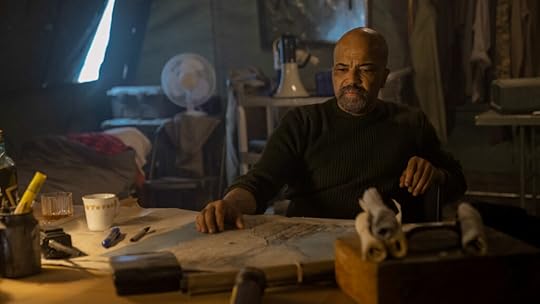 Jeffrey Wright in “The Last of Us” Season 2, Episode 7 (Liane Hentscher/HBO)Not our war
Jeffrey Wright in “The Last of Us” Season 2, Episode 7 (Liane Hentscher/HBO)Not our warThe “Last of Us” Season 2 finale cuts briefly away from Ellie and Jesse’s journey across Seattle to catch back up with Isaac (Jeffrey Wright) and Elise Park (Hettienne Park). The latter informs Isaac that Abby has gone missing, as have both Owen (Spencer Lord) and Mel (Ariela Barer). Isaac reacts to the news badly, revealing to a dismayed Sergeant Park that he believes there is a high chance both of them will be dead by morning and that he thinks Abby is the only soldier suited to lead the W.L.F. in his stead. “It was supposed to be her,” he confesses. “Well, she’s f—ked off, Isaac,” Park counters. “So maybe it wasn’t.”
Ellie and Jesse make it to their rendezvous point only to discover that Tommy still has not returned to it. A tense conversation between Ellie and Jesse, in which the latter takes a condescending moral high ground over Ellie and announces that he was “taught to put other people first,” is interrupted by a W.L.F. radio call asking for backup against an unidentified sniper. Jesse and Ellie deduce that the sniper in question is Tommy and set out to help him, but Ellie’s trek there is derailed when she sees in the distance a ferris wheel next to an aquarium with a whale painted on the side of it. Using the clues Nora gave her, Ellie realizes that is where Abby is and decides to finish hunting her target down.
She meets resistance, though, first from Jesse, who tells her Tommy needs their help more than she needs her revenge. “You do everything for you,” he spits at her, revealing that he did not actually vote to send a posse out to avenge Joel during Jackson’s town council meeting in “The Path.” Ellie lashes out in response, condemning Jesse’s belief in helping only the people he considers part of his community and insisting that he would do the exact same thing as her if he was in her position. Angered and frustrated, Jesse sullenly parts ways with Ellie, but not before telling her, “I really hope you make it.”
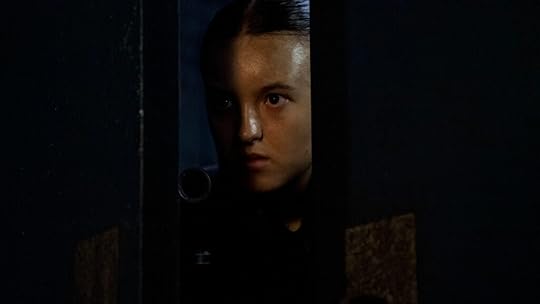 Bella Ramsey in “The Last of Us” Season 2, Episode 7 (Liane Hentscher/HBO)You gotta be kidding me
Bella Ramsey in “The Last of Us” Season 2, Episode 7 (Liane Hentscher/HBO)You gotta be kidding meShe nearly doesn’t. Before she makes it to the aquarium, Ellie watches W.L.F. soldiers, including Isaac, boarding boats in the middle of a vicious storm. She follows after them in a boat of her own that gets quickly overturned by a massive wave that leaves her washed ashore an island inhabited by the Seraphites. She is strung up and nearly gutted by her new captors, but they decide to leave her alive when the W.L.F. launches a surprise attack on their island village. As Ellie sails away, explosions can be seen going off on the island, teasing a battle between the W.L.F. and the Scars that “Last of Us” viewers do not actually get to see.
Ellie eventually makes it to the aquarium, where she finds Mel and Owen, who reacts to Ellie’s arrival with an astonished, “You gotta be kidding me.” She demands they tell her where Abby is, and she tries to interrogate them the same way Joel did a pair of cannibals in “The Last of Us” Season 1. Her plan goes awry, however, when Owen tries to pull a gun on her, which forces her to shoot him. He falls dead to the floor, and Ellie realizes too late that her bullet shot all the way through him and into Mel’s neck as well. The W.L.F. medic collapses and begs Ellie to perform an emergency C-section on her with a knife — revealing the very prominent baby bump that was covered by her coat. Mel dies within moments, though, long before Ellie gets the chance to save her and her baby’s lives.
The deaths rock Ellie, who is left sobbing to herself until Tommy and Jesse arrive and take her back to the theater with them. The trio makes plans to return to Jackson, and inevitability that Ellie notes means “Abby gets to live.” “Yes,” Tommy responds. “Do you think you can make your peace with that?” Ellie believes she has to, and Tommy leaves to start packing their bags in the theater’s lobby. Alone, Jesse and Ellie mend their friendship. The latter* divulges that he went back for her because he knew she would do the same for him.
Before the two can properly apologize to each other, they hear gunshots and chaos in the lobby. When they run to investigate, Jesse is shot through the face by a waiting Abby, who keeps Tommy held at gunpoint and threatens to shoot him, too, if Ellie does not surrender. Ellie tosses her gun away, confesses to killing Abby’s friends and takes the blame for Joel’s actions in “The Last of Us” Season 1. “I let you live, and you wasted it!” Abby shouts back, but viewers do not see where her and Ellie’s confrontation goes from there.
*Moments before he is killed, Jesse once again mentions that he is going to be a father and Ellie also tells him that he is a “good person.” These lines feel like just two examples of how blunt, on-the-nose and uncannily literal the writing has been at times throughout “The Last of Us” Season 2.
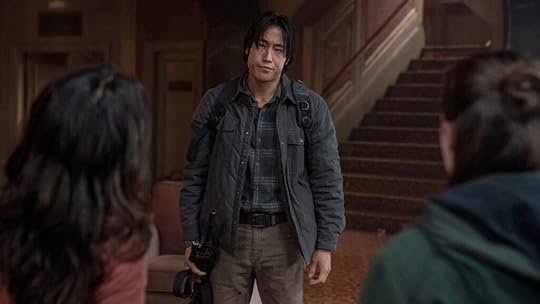 Young Mazino in “The Last of Us” Season 2, Episode 7 (Liane Hentscher/HBO)Abby gets to live
Young Mazino in “The Last of Us” Season 2, Episode 7 (Liane Hentscher/HBO)Abby gets to liveInstead, “The Last of Us” jumps backward three days. Abby is awoken by Manny (Danny Ramirez), and viewers follow her as she walks through the football stadium that the W.L.F. uses as both a post-apocalyptic safe haven and base of operations. A title card appears in the corner of the frame: Seattle: Day One.
“The Last of Us” Season 2 then cuts to black for the last time, leaving viewers to sit in the aftermath of its sudden perspective shift, which is one of the many creative decisions that made “The Last of Us Part II” so divisive among gamers when it was released in 2020.
The season finale’s ending sets “The Last of Us” up to follow its video game source material and spend its next 7-10 hours entirely with Dever’s Abby and her friends. That is not necessarily surprising, given the previous events of the season and the fact that this week’s episode was written once again by “Last of Us” showrunner Craig Mazin and “Last of Us Part II” co-writers Neil Druckmann and Halley Gross. Nonetheless, it’s worth asking: Will casual viewers be interested in actually spending an entire season — or even just half of a season — solely with Abby and the characters who surround her? Will they be interested in abandoning the characters they have come to know for that long of a period of time?
It is a risk “The Last of Us” has chosen to take. Only time will tell whether or not it pays off. Either way, the closing moments of the HBO series’ latest episode mark a fittingly jarring end to a season that has, unfortunately, felt disjointed and clunky for much of its run.
“The Last of Us” Seasons 1-2 are available to stream now on HBO Max.
The post ‘The Last of Us’ Season 2, Episode 7 Recap: Where Is Abby? appeared first on TheWrap.
Cannes 2025 Critic’s Take: The Festival’s Best Films Found Beauty in a Broken World
In the first half of this year’s Cannes Film Festival, the films were often, understandably, downright apocalyptic. After all, the world is in dire straits and cinema, as well as any art we make, has always reflected this.
But unlike many festivals, Cannes does not frontload its schedule with most of the high-profile titles in the first few days. With this in mind, it was in the second half of the 12-day event where some of the best, most exciting films premiered, making the festival one of the better in recent memory by closing on a high note.
The late-breaking films also helped Cannes find a tone that, while still frequently grounded in pain, was often defined by a sliver of cautious hope. Things were still frequently bleak, but there was also a beauty to these films that proved to be genuinely moving as they explored the enduring power of cinema, community, and our shared desire to dream in a world of nightmares.
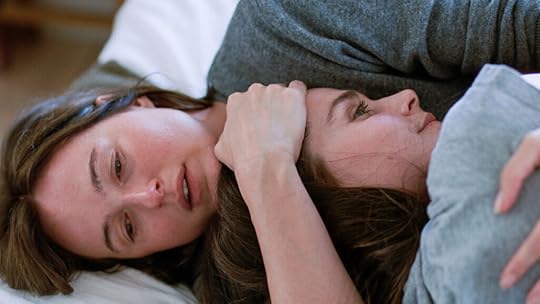 “Sentimental Value” (Credit: Cannes Film Festival)
“Sentimental Value” (Credit: Cannes Film Festival)One of the films that encapsulated this was Joachim Trier’s outstanding, Grand Prix-winning “Sentimental Value.” A subtle yet soaring film about cinema and one family’s relationship to it, it is unabashedly a work about the complicated, connective power art can have in our lives. Specifically, it centers on a father and filmmaker, Gustav (Stellan Skarsgård), who is trying to reconnect with his daughter Nora (Renate Reinsve), who is an actress of the stage rather than the screen. As he tries to get Nora to star in what may be his last film, the fault lines of their relationship are brought to the surface just as Trier dives in deeper to explore questions about how it is that we can connect.
The filmmaker fully explores the fraught path towards reconciliation without smoothing over its rough edges. In lesser hands, a film about how art heals all wounds could easily fall into being saccharine. Not so for Trier, who shows how wounds remain, forever felt in our memories just like the shouting echoes through the house to which the film is largely confined. This only makes the eventual moments of love the film finds that much more earned. A final look exchanged between father and daughter, both finally now seeing each other, is one of the most indelible images that will endure from the festival. As Trier said during the film’s press conference, “tenderness is the new punk,” and this slightly dorky, yet still delicately sincere, guiding ethos sums up what it was that made the best films of this festival stand out.
 “Alpha” (Credit: Cannes Film Festival)
“Alpha” (Credit: Cannes Film Festival)This also extends to one of the most divisive yet significant films of the festival: “Alpha.” The latest from Julia Ducournau, who won the Palme d’Or for “Titane” just a few years ago, it’s a reflection of her own experience of when she was a child growing up during the height of the AIDS crisis. This, along with Ducournau leaning less into body horror and more into drama, ended up becoming a critical point of contention. While it faced an initial negative wave of reactions, it’s precisely the more unexpected tonal register that it taps into which makes it all the more significant.
It’s a deeply sad film, yes, but it’s also an earnest one about memory and loss. Its central visual motif, which shows those we love decaying before our eyes just as they become monuments to themselves, proved to be one of the most striking images of the entire festival. There is no getting around the horror, which is underplayed yet still present in every scene, but Ducournau interweaves it with gentle moments of grace that prove shattering. Loss is inescapable yet “Alpha” finds beauty in the pieces of our broken world.
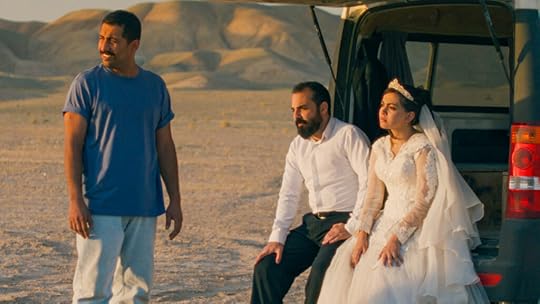 “It Was Just an Accident” (Photo Courtesy of Cannes)
“It Was Just an Accident” (Photo Courtesy of Cannes)Sometimes, this beauty is more humble in nature, though this only makes it more impactful and essential. There is a beauty that is felt in the eyes of the characters of Jafar Panahi’s Palme d’Or-winning humanistic triumph “It Was Just an Accident.” It’s a film that feels like the embodiment of the phrase “in every person, a universe” as it takes us into the lives of a group of people still reeling from the trauma of being interrogated in prison during Iran’s brutal crackdown on dissidents.
When they think they have a chance at getting justice, or at least some sort of revenge, against the man they believe to be their interrogator, they’ll go on a darkly humorous journey trying to prove that he is indeed the torturer they believe him to be. It’s something that’s deeply personal for Panahi, who was himself imprisoned by the Iranian government and once banned from making films (though was able to attend the festival this year in what proved to be one of the most moving moments off the screen). As always, the filmmaker remains deeply interested in people, their pains and their potential for kindness, making “It Was Just an Accident” a deeply felt portrait about their humanity just as it carries with it a simmering rage against injustice. The two not only go hand in hand, but show how it is people that are the most beautiful parts of the world and cinema.
There were many more films that tapped into this beauty, including smaller works that could easily go overlooked like “A Useful Ghost,” “Death Does Not Exist” and “Drunken Noodles,” or the ones that got some of the bigger awards like “The Little Sister” (whose first-time lead Nadia Melliti rightfully won the Best Actress award), “Resurrection” (a dizzying sci-fi epic that won a Special Award), and “Young Mothers” (which won Best Screenplay). Though it went unrewarded by the jury, one final film was not just the best of the festival but the most incisive in how it explored this: Kelly Reichardt’s magnificent “The Mastermind.”
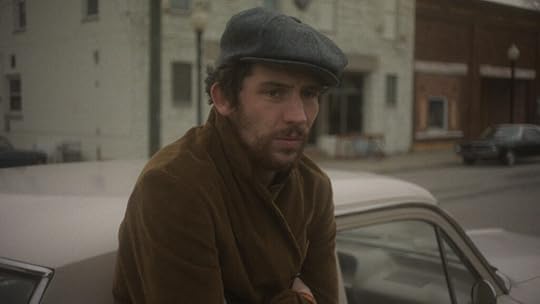 Josh O’Connor in “The Mastermind” (Photo courtesy of Cannes Film Festival)
Josh O’Connor in “The Mastermind” (Photo courtesy of Cannes Film Festival)Though Reichardt has never gotten the love that she deserves from Cannes, she has consistently made the most quietly moving and thoughtful films each time she’s part of the programming. Her latest is no different. A deconstruction of the heist film starring a never-better Josh O’Connor as J.B., a man who hatches a poorly thought-through plan to steal art from his local museum while the Vietnam War and the protests against it play out in the background, it brings Reichardt’s emphatic attention to detail and thoughtfulness about people. It’s another wryly funny film for the director, carving out plenty of sharp humor in seeing how everything comes apart in ways big and small, though it also shifts into being deeply, beautifully, reflective the longer it carries on.
After accountability comes knocking for O’Connor’s titular mastermind (an ironic title if there ever was one), he takes off on the run without any real idea of what his future will look like. In one conversation he has with an old friend, perfectly played by Reichardt’s longtime collaborator John Magaro, he is told that he could go up to Canada to be part of a commune. When J.B. balks at this, derisively saying he doesn’t want to be alongside draft dodgers, Magaro then delivers a playful, yet earnest, rejoinder. saying, “draft dodgers, dope fiends, radical feminists…..good people.” It’s the line that’s been rattling around my mind most from the festival. This is not only because of how gently funny it is, but because this humor is bound up in what so much of Reichardt’s project has been about: finding the beauty in people.
These are ordinary people, all just trying to make their way in the world, and they are often deeply flawed. Yet Reichardt brings a care for each of them, finding beauty in the smallest of scenes that then become something much larger in her hands. The evocative ending of “The Mastermind” brings the pain crashing down, but just for a minute, you feel an ache to go off to join the commune of good people up in the north. The world will continue to be full of pain, but the best, most stunning, works of cinema at Cannes this year were the ones like “The Mastermind” that find the beauty in these people all the same.
The post Cannes 2025 Critic’s Take: The Festival’s Best Films Found Beauty in a Broken World appeared first on TheWrap.
Movie Theater Roof Collapses During ‘Final Destination: Bloodlines’ Screening in Argentina
Attendees at a May 19 screening of “Final Destination: Bloodlines” were in for an unfortunate surprise when the roof of the theater collapsed toward the end of the movie.
The news was initially reported by the Argentine news site Infobae. No one was seriously injured, and the outlet reported it’s believed that recent rain made the roof particularly vulnerable to collapse.
Fiamma Villaverde, who attended the movie at Cinema Ocho with her 11-year-old, said they heard “a really loud noise” that precipitated the event. “At first, we thought it was part of the movie, because we were so involved; but then a huge piece fell on me,” she explained.
A woman in Argentina was injured after a piece of the cinema ceiling fell on her during a screening of #FinalDestinationBloodlines .
— 𝘏𝘖𝘙𝘙𝘖𝘙 𝘜𝘕𝘐𝘝𝘌𝘙𝘚𝘈𝘓 (@UnlHorror_) May 25, 2025
It barely missed my head thanks to being bent over.pic.twitter.com/iioMqDDhlX
Luckily she wasn’t hit by the ceiling piece because “I was leaning slightly over the armrest.”
“The truth is, we hadn’t planned to go to the movies,” Villaverde also shared. “It was my birthday, we were walking and happened upon the theater. Since the tickets were cheaper than the rest of the week, we said, ‘Shall we?’ We went in, bought some popcorn, and went into the theater. The show had just started.”
A woman in Argentina watching FINAL DESTINATION: BLOODLINES in a movie theater was injured after a piece of the roof fell on her. pic.twitter.com/rRv0AJNzFL
— The HoloFiles – Movies & TV News & Reviews (@theholofiles) May 25, 2025
Since the event Villaverde has stuffed from panic attacks and anxiety – and not just from the horror film, about a group of people who narrowly escape a deadly calamity, only to die one-by-one from a series of inventively unfortunate events.
“I’m undergoing psychiatric treatment and on medication. I have a hard time being in crowded places. I haven’t been to the movies in years. I went because it was my birthday, and look what happened to me,” she added.
Cinema Ocho has not responded to requests for comment.
“Final Destination: Bloodlines” opened to a massive $51 million from 3,523 theaters this month. The film is the first installment in the franchise in 14 years and has enjoyed its most popular opening weekend. The series record previously belong to 2009’s “The Final Destination” with a $27.4 million opening, or $41 million in today’s figures.
The post Movie Theater Roof Collapses During ‘Final Destination: Bloodlines’ Screening in Argentina appeared first on TheWrap.
‘Rick and Morty’ Bosses Want Their Show to Be More Streaming Friendly, Too
It’s a problem that crops up every couple of years. One of the biggest shows on television isn’t on streaming or broadcast; it’s almost exclusively on cable. “Rick and Morty” showrunners Scott Marder and Dan Harmon know that new seasons of their Adult Swim original can be difficult to watch.
New seasons of “Rick and Morty” premiere Sundays on Adult Swim. Though the network does sometimes allow fans to watch select episodes for free on its website, the full season often isn’t available to stream until roughly six months after the last episode airs. That’s when “Rick and Morty” goes to Hulu and Max, the streamer owned by the show’s parent company Warner Bros. Discovery.
“I don’t know how it fell into that distribution model. We are constantly trying to shrink that window. It might shrink to three months this year. I could be wrong,” Marder told TheWrap. “I don’t see the benefit of it. Most shows are on streamers the next day or even that same day.”
This delayed distribution model hasn’t changed how Marder or Harmon construct new seasons. But they have noticed a specific viewership pattern. “Normally, our rabid fans are grabbing us right when we come out. Then there’s a whole major class of casual viewer that doesn’t realize that it [premiered] and think it’s launching on Max three months from now,” Marder said. “It’s kind of two waves that everyone tries to capitalize on. That’s the way it’s been the last couple years.”
“I think I would be in that latter category if it weren’t for premiere parties,” Harmon added. “That’s how I know it’s premiering — it’s on my calendar because there’s a party. Otherwise, I’ve tried to watch it when it drops, and I’ve had to go to, like, YouTube Premium, Platinum, Recorded. I’ve enlisted housekeepers and things to try and make it work because I want to watch this episode the minute it’s airing, and I have a hard time watching.”
Harmon then paused for a moment, reflecting. “It’s probably a scandalous quote. ‘Willy Wonka says he can’t open this package of Reese’s Pieces.'”
Regardless of how it’s available to watch, “Rick and Morty” isn’t going anywhere. Ahead of the Adult Swim show’s eighth season, the sci-fi animated comedy was renewed through Season 12 last year. This mega greenlight came while the series was still working its way through the 70-episode order it was given back in 2018. Despite the fact that “Rick and Morty” may have more of a guaranteed runway than almost any other show on television, the process hasn’t changed much for the series’ showrunners.
“I feel the same pressure whether we’ve got two more seasons or five more seasons. We only get 10 [episodes] a season, and I feel the same pressure to make those 10 the very best 10 we can,” Marder said. “I can’t believe the quality that we’re delivering in [seasons] eight, nine and 10. They feel very unprecedented for a show this deep in its run … Internally, it’s still feeling really fresh. So that excites me. I feel like we can keep rolling with it.”
“The deadlines don’t go anywhere. That’s why Scott saved the show,” Harmon said.
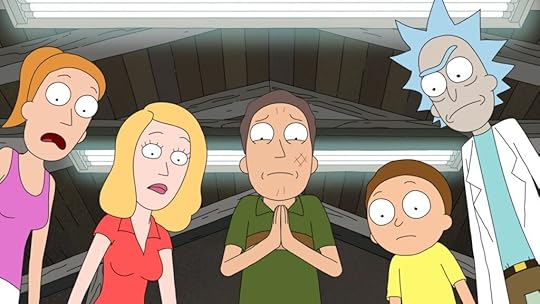 “Rick and Morty” Season 8 (Photo Credit: Adult Swim)
“Rick and Morty” Season 8 (Photo Credit: Adult Swim)Before Marder took charge of “Rick and Morty,” the series was led by its co-creators Harmon and Justin Roiland. Warner Bros. Discovery later cut ties with Roiland in 2023 after the co-creator was accused of sexual assault and explicitly communicating with underage girls. When Harmon and Roiland were running the show, Harmon described the process as “this auteur-based, oh my god, Kanye has got to cook.” Since Marder joined in Season 4, the series has become notably more steady. Reports of internal creative friction have all but vanished and the days of waiting multiple years for a new season are gone.
“[Marder] gets the uncredited work of bailing out this sinking ship. The point of his existence is that the deadlines are always there. Without them we wouldn’t be able to produce. I think that the pressure to do something great is usually your enemy, not your friend,” Harmon said. “This sort of shame reflex that writers tend to have like, ‘Oh, I better make this pilot good, or I’ll never get picked up and an audience won’t care,’ you make sloppier decisions when you do that. You tend to put a ‘Got milk?’ joke in there that didn’t make you laugh out loud because you’re like, ‘I think this is what people think is funny.'”
Harmon sees these renewals as well as the consistent structure of “Rick and Morty” as a “huge value add” for the show’s writers. “Writers look at it — I think, creatively — like the way it might be to write for ‘Black Mirror.’ This is a place for me to make sure that I’m following my bliss when I pitch something and, when I develop it, to make sure that it’s a gem that belongs in this sandbox.”
Harmon then paused again, self-consciously considering his own words. “A gem in a sandbox. I still got it. Still making razor-sharp metaphors.”
There’s no end when it comes to praise for “Rick and Morty.” The series holds the record as the most-watched Adult Swim series in the network’s history and has won the Primetime Emmy for Outstanding Animated Program twice. To date, every season of the show has earned a “Fresh” Rotten Tomatoes score, and it isn’t unusual for the critical ratings to be in the 90th percentile.
But with hindsight, Harmon sees the show’s devotion to its creative ethos as its “big fatal flaw.”
“Both Justin and I had the ability to stop the clock, and that meant the clock was always going to be stopped. I would keep my coffee on that button,” Harmon joked. “Scott has to keep those trains running, and that frees me to be nitpicky. At the end of the day, I can do a speech about how it would be great if we redid this entire thing, and Scott could either indulge that — which he often does — but he can go, ‘Yes, that would be great. And let’s see what we can do working backwards from the fact that this is airing on schedule.’ That is a big paradigm shift that trickled down to the mental health of every storyboard artist.”
Keeping the creative trains on track is especially important right now considering how many projects are currently sporting Harmon’s name. In addition to “Rick and Morty,” he is a creator and executive producer for Fox’s “Krapopolis” and Netflix’s upcoming “The Undervale.” There’s also the long-awaited “Community” movie, which is still in the works.
“I keep redefining my definition of busy in the direction of laziness. I learned in therapy that this beloved city that I love and that is the only city on Earth where I could have ever found happiness in is the Las Vegas of workaholism. If you are willing to work 14 hour days, it will say, ‘Fifteen would be great, too,'” Harmon said of Los Angeles. “The last eight years of my life have been slowly accepting I shouldn’t be working as much and I’ll never be ashamed of that. So it only looks like I’m busy because you see my name … But thanks to losing the auteur model, delegating, using teams and families, I’m not spread thin. I’m just playing video games, and then I’m doing this for a couple hours a day, I promise.”
“I’m happy to pick up his slack,” Marder added. “We’ve got a good ebb and flow that way, because I’m hungry and sincerely happy to pick up whatever he doesn’t want to touch.”
“Rick and Morty” airs Sundays at 11 p.m. ET/PT on Adult Swim.
The post ‘Rick and Morty’ Bosses Want Their Show to Be More Streaming Friendly, Too appeared first on TheWrap.
May 24, 2025
Jerrod Carmichael Loved Going to Uncomfortable Places for ‘Don’t Be Gay’
A lot has changed for Jerrod Carmichael since his last HBO standup special, “Rothaniel” in 2022, where he revealed his unusual first name and the fact that he is gay. Since then, he hosted the Golden Globes, where he joked he was only chosen because he was Black, and launched and starred in his own HBO reality series.
Now he’s back with his third comedy special, in which he riffs on breaking the one rule his family had growing up: “Don’t Be Gay,” as well as obsessing over D’Angelo’s life-changing 2000 music video for “How Does It Feel.”
Ahead of the May 24 debut of “Don’t Be Gay,” Carmichael chatted with TheWrap about going to uncomfortable places with his comedy and how his boyfriend reacted to jokes about their relationship.
TheWrap: How did your approach to this special differ from your previous ones?
Carmichael: I worked on it for at least a year. Some material is even older than that. This is probably the most time I put into material.
I definitely did a more free-form comedy form in my previous special. This is kind of like a culmination of all of my work so far, everything from the documentary to written jokes to storytelling, just all of those things that I’ve learned over the years in one act.
It’s kind of broader and out to the world more than my last special, or even my first special. I am performing and telling jokes and stories and [it’s] a little more expansive.
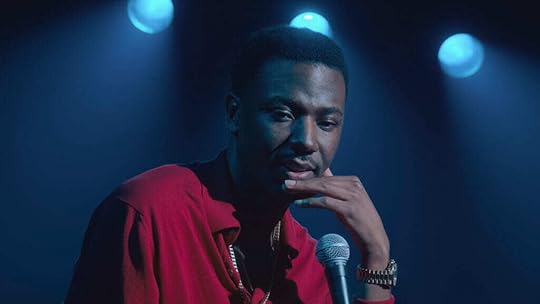 Jerrod Carmichael in his 2022 special “Rothaniel” / HBO
Jerrod Carmichael in his 2022 special “Rothaniel” / HBODo you run any of these jokes about your boyfriend past him before they go into the routine?
No. These are my observations. This is my story to tell. I don’t run it by him. He came to the taping and he was hearing material for the first time.
What was his reaction?
Exactly what I thought. Not angry, not laughing, but kind of … you know how someone squints at you like, “Oh, that’s what you’re thinking about?” Because it is so personal and these are just the thoughts that I have during an argument. So it wasn’t shocking to him, but definitely someone hears your interpretation of a relationship or a fight, and they’re just, “Uh huh.”
Does that end up benefiting the relationship?
Yeah. I found that saying the things you’re afraid to say gets you what you want.
You also name-check Michael Che at one point. I’m guessing you didn’t give him a heads up either.
He showed up when I was doing it in LA and I didn’t know he was in the room. And then, I get off stage and he’s the first person that walks up. And I’m like, “Oh my god, I’m so happy you’re here.” He loved it.
One of the biggest moments in the special is when you share a really personal story about when you felt targeted for being gay. How hard was it to share that?
Well, it’s a story that [I’m] able to kind of laugh at with some distance. I told the story, really, because I thought it was funny. I mean, it was horrible although it was funny. That’s always exciting to do, to go to a place that could be heavy and finding some light.
Is that kind of your whole approach to comedy?
Louis [C.K] talks about this, like, you can go to very uncomfortable places. And you can kind of guide an audience through an uncomfortable story or uncomfortable thoughts, as long as you know where you’re going, as long as you have a plan and it’s crafted. A big goal for me is trying to articulate an experience of something that may not be easy, but that’s what makes it more rewarding.
I recently wrote an article that touched on how “retard” is being used by Shane Gillis and other comics, and I noticed you use it in “Don’t Be Gay” as well. Do you think that’s partly a generational thing?
It is a generational thing. It’s a word that you grow up hearing and saying. I can’t speak for Shane or any of the other guys what their intention is. I’m definitely not saying it because of a current trend or anything. It’s just something I grew up with. [There’s] a lot of words that we won’t have to list, but a lot of words that I grew up with just stayed with me. I’m saying it meaning no harm. I’m telling a story from my childhood, you know. It’s from the perspective of a child in the ’90s, right?
What do you say to people who might be offended by that?
I don’t know what I want to say. I mean, people come to the show, people laugh. It’s never been a thing that someone said to me after a show.
I will say that you can be offended by art, and that’s OK. I would hope that they’re able to breathe through it and still find something funny and still laugh. I’m definitely not somebody that’s just like, “Too bad, so sad.” My purpose is to entertain. I want to make something entertaining and some of my favorite pieces of art are things that make me personally offended. And if it works in the art, then it works in the art. I just hope they can still enjoy it.
How did you decide the line you were going to end this special with?
It kind of just came together. Sometimes you start with, like, scattered ideas and it’s almost like a free associative therapy. Beginning a session, I would start with a thought or a feeling, and then I would go away from it, and then come back and realize I’ve been talking about the same topic the whole time, even when I didn’t realize it. And my sets kind of are crafted that way.
I just do the material that I’m excited to say and the things that I’m excited to share, and at some point during the process I realize, “Oh, this is actually a set.” It’s like, cohesive material. And that just kind of happens over the course of development.
Sometimes I don’t even realize it. It really is from God, I don’t realize how I’m doing it. I don’t realize that I’m crafting something. And when you have that realization, it’s time to record.
“Jerrod Carmichael: Don’t Be Gay” is now streaming on HBO and Max.
The post Jerrod Carmichael Loved Going to Uncomfortable Places for ‘Don’t Be Gay’ appeared first on TheWrap.
Amazon Tribe Sues New York Times for $180 Million Over Internet-Access Story That Sparked Porn Addiction Reports
A remote indigenous tribe Amazon tribe in Brazil has sued The New York Times and others, claiming a story about its first exposure to the internet has led to widespread reports that its members have become addicted to pornography.
Filed last week in Los Angeles, the Marubo Tribe of the Javari Valley’s lawsuit also names TMZ and Yahoo as defendants and seeks at least $180 million from each. The sovereign community alleges the story, about the arrival of Starlink in 2024, falsely portrays its 2,000 people as “unable to handle basic exposure to the internet, highlighting allegations that their youth had become consumed by pornography.”
“These statements were not only inflammatory but conveyed to the average reader that the Marubo people had descended into moral and social decline as a direct result of internet access,” the lawsuit says, according to the Associated Press. “Such portrayals … directly attack the character, morality, and social standing of an entire people.”
The lawsuit was first reported by Courthouse News.
In a statement to the AP, the Times said: “Any fair reading of this piece shows a sensitive and nuanced exploration of the benefits and complications of new technology in a remote Indigenous village with a proud history and preserved culture. We intend to vigorously defend against the lawsuit.”
The story, by Times reporter Jack Nicas, suggested the community was now facing the same struggles as much of the modern world after less than a year of service, including “teenagers glued to phones; group chats full of gossip; addictive social networks; online strangers; violent video games; scams; misinformation; and minors watching pornography,” with the latter being most unsettling to tribal leaders.
That theme was expanded upon by other outlets who aggregated it, including TMZ, sparking a follow-up story in the Times, headlined: “No, a Remote Amazon Tribe Did Not Get Addicted to Porn.” “There was no hint of this in the forest, and there was no suggestion of it in The New York Times’s article,” Nicas wrote in his second piece.
The tribe’s lawsuit says that effort “failed to acknowledge the role the NYT itself played in fueling the defamatory narrative. Rather than issuing a retraction or apology, the follow-up downplayed the original article’s emphasis on pornography by shifting blame to third-party aggregators.”
The lawsuit seeks at least $180 million from each named defendant, including general and punitive damages.
The post Amazon Tribe Sues New York Times for $180 Million Over Internet-Access Story That Sparked Porn Addiction Reports appeared first on TheWrap.
American Society of Cinematographers Elects Mandy Walker as President
The American Society of Cinematographers has elected Australian filmmaker Mandy Walker as president, making her the first woman to hold the role, the organization announced Saturday.
“It is a great honor to be the president of the ASC, and an even bigger privilege to be the first woman to hold the position,” said Walker. “I am so humbled to take on the responsibility of representing a society that has carved out an inspiring, inclusive space to meet and support other cinematographers. I am proud of our century-old legacy to advance the art and science of cinematography, and I’m excited for the future of our organization.”
“I am intent on making sure our members have the space to grow, the opportunities to educate and learn from one another, and the support of their fellow filmmakers to carve out the best career they can,” added Walker. “We will continue to lead efforts in raising awareness about the importance of representation behind the camera.”
Walker is known for her work on “Snow White” (2025), “The Mountain Between Us” (2017), “Truth” (2015), “Jane Got a Gun” (2015), “Tracks” (2013), “Red Riding Hood” (2011), “Australia” (2008) and “Shattered Glass” (2003), “Lantana” (2001), “The Well” (1997), and “Parklands” (1996). She also worked on Baz Luhrmann’s Chanel No. 5 campaign that featured Nicole Kidman and Gisele Bündchen.
Other members of ASC’s leadership include Eric Steelberg, John Simmons, Patrick Cady, Charles Minsky, Dejan Georgevich, and Charlie Lieberman. Members of the board include Natasha Braier, Alice Brooks, Patrick Cady
Russell Carpenter, Richard Crudo, Karl-Walter Lindenlaub, Tommy Maddox-Upshaw, Erik Messerschmidt, Charles Minsky, M. David Mullen, Cynthia Pusheck
John Simmons, Eric Steelberg, Amy Vincent, and Mandy Walker.
The post American Society of Cinematographers Elects Mandy Walker as President appeared first on TheWrap.
Freddie Mercury Had a Daughter With Friend’s Wife, New Book Claims
An upcoming biography of Freddie Mercury claims the Queen frontman fathered a child with the wife of a close friend in 1976. In “Love, Freddie: Freddie Mercury’s Secret Life and Love,” author Lesley-Ann Jones also claims that Mercury’s parents and close friends knew about the child.
The Daily Mail also reported Mercury frequently visited the young girl before he died of bronchial pneumonia, and that he gave her 17 journals that she in turn gave to the author for the book.
“He entrusted his collection of private notebooks to me, his only child and his next of kin, the written record of his private thoughts, memories and feelings about everything he had experienced,” the woman, who is now 48 years old, said of Mercury.
The unidentified woman also claims she knew Mercury was her father from a young age.
“It was decided between the three adults that the child would live with her mother and her husband – the child’s stepfather,” Jones writes.
The book also includes a letter from the woman in question wherein she explains why she shared the journals in the first place.
“After more than three decades of lies, speculation and distortion, it is time to let Freddie speak. Those who have been aware of my existence kept his greatest secret out of loyalty to Freddie. That I choose to reveal myself in my own midlife is my decision and mine alone,” the letter reportedly reads.
Mercury was known for his relationships with men and women. He famously dated planned to marry Mary Austin, but the pair ended their relationship in 1976.
“All my lovers asked me why they couldn’t replace Mary, but it’s simply impossible,” People reported Mercury said in 1985. “The only friend I’ve got is Mary, and I don’t want anybody else. To me, she was my common-law wife. To me, it was a marriage. We believe in each other, that’s enough for me.”
Mercury left Austin most of this fortune, including a home in Kensington, in his will. The pair were portrayed by Rami Malek and Lucy Boynton in the 2018 movie “Bohemian Rhapsody.”
The post Freddie Mercury Had a Daughter With Friend’s Wife, New Book Claims appeared first on TheWrap.
The 13 Best Netflix Original Horror Movies, Ranked
It’s a cliché but it’s a cliché for a reason: Netflix puts out so many movies that most people never even hear about them. That sucks, because while they can’t all be bangers, a lot of those Netflix Originals deserve an audience. Especially their horror flicks, because believe it or not they’ve put out a lot of fantastic scary flicks for fans of all ages.
Let’s take a look at the best Netflix Original horror movies, shall we…?
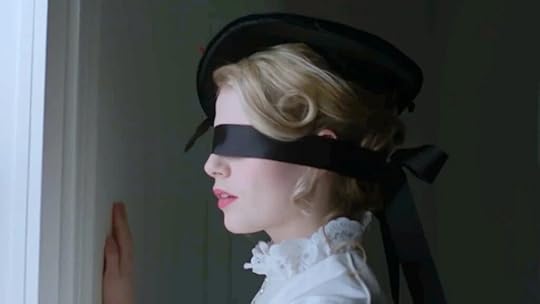 Lucy Boynton in ‘I Am the Pretty Thing That Lives in the House’ (Netflix)13. ‘I Am the Pretty Thing That Lives Inside the House’ (2016)
Lucy Boynton in ‘I Am the Pretty Thing That Lives in the House’ (Netflix)13. ‘I Am the Pretty Thing That Lives Inside the House’ (2016)Before his big, breakout hits “Longlegs” and “The Monkey,” Osgood Perkins lurked in Hollywood’s shadows, quietly gaining cinematic power with artsy, eerie sleepers like “I Am the Pretty Thing That Lives in the House.” Ruth Wilson (“Luther”) stars as a nurse hired to live in an old, old house and care for a famous horror author with dementia. Maybe she’s getting obsessed with her patient’s scary novels. Maybe the house has a black mold problem. Maybe it’s haunted. Maybe all three. “I Am the Pretty Thing That Lives in the House” is light on plot but heavy on atmosphere, and leaves you feeling deeply unsettled.
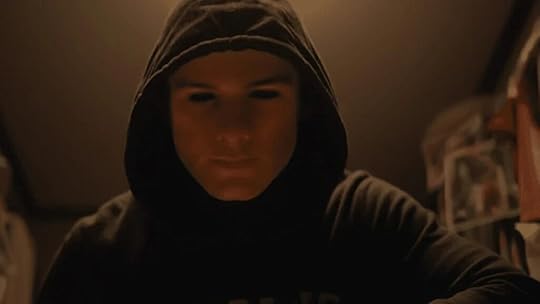 ‘There’s Someone Inside Your House’ (Netflix)12. ‘There’s Someone Inside Your House’ (2021)
‘There’s Someone Inside Your House’ (Netflix)12. ‘There’s Someone Inside Your House’ (2021)One of the hardest things for any new slasher is to come up with a new and scary disguise. We’re running out of original ideas on that front, but Patrick Brice’s “There’s Someone Inside Your House” has an inspired approach. In this movie about teenagers getting murdered (inside their house), the killer appears wearing a mask that looks exactly like their victims’ face. Damn, that’s eerie. Brice directs the hell out of this scary movie, which hits most of the familiar slasher movie beats but hits them hard. A great cast and memorable characters help too. “There’s Someone Inside Your House” is one of Netflix’s most overlooked horror flicks.
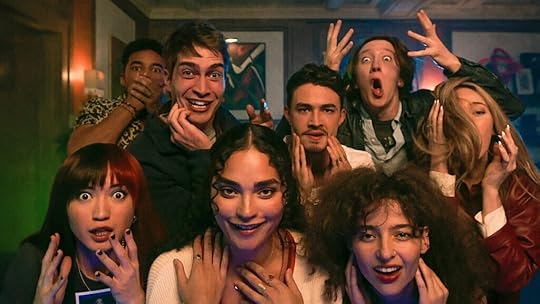 “It’s What’s Inside” (Netflix)11. ‘It’s What’s Inside’ (2024)
“It’s What’s Inside” (Netflix)11. ‘It’s What’s Inside’ (2024)A group of college friends reunite for a party, and the black sheep of the group — who was mysterious drummed out of school for something his friends did — shows up too. He’s got a new party game, a prototype machine that makes all the attendees switch bodies. The novelty wears off quickly when someone dies inside the wrong body, and there’s no one left to switch to, so panic and betrayal sets in. Greg Jardin’s smartly conceived mindfuck movie could be hard to follow, but a clever color palette keeps the twisty-turny plot easy to follow. Mean-spirited indie sci-fi/horror at its finest.
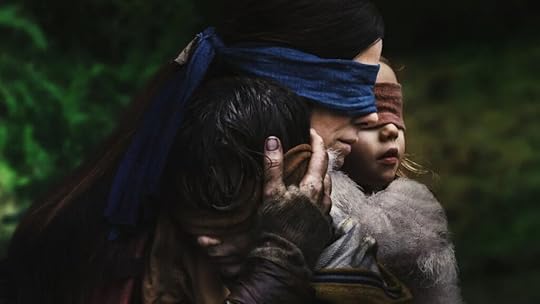 Sandra Bullock in ‘Bird Box’ (Netflix)10. ‘Bird Box’ (2018)
Sandra Bullock in ‘Bird Box’ (Netflix)10. ‘Bird Box’ (2018)Looking back it’s almost hard to believe that Netflix’s breakout hit “Bird Box,” about a mysterious event that forces everyone to stay inside and only go out if they cover their face, was released prior to the COVID pandemic. In retrospect it’s practically on the nose. Directed by Oscar-winner Susanne Bier, the film stars Sandra Bullock as a pregnant single mother who gets stuck inside a house with a bunch of agitated strangers, because there’s something outside that makes you kill yourself if you look at it. It’s got an intriguing premise and a stacked case — Bullock is joined by John Malkovich, Trevante Rhodes, Lil Rel Howery, Jacki Weaver, BD Wong, the list goes on like this — so who cares if the themes are a little muddled?
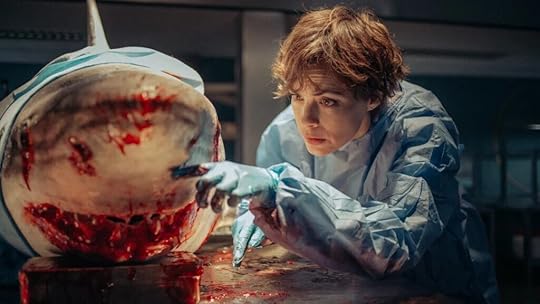 Bérénice Bejo in ‘Under Paris’ (Netflix)9. ‘Under Paris’ (2024)
Bérénice Bejo in ‘Under Paris’ (Netflix)9. ‘Under Paris’ (2024)There’s a giant shark in the Seine. That’s it, that’s the concept. Xavier Gens manages to take a pretty silly idea, right out of the SyFy Channel gene pool, and turn it into a genuinely satisfying monster movie. Oscar-nominee Bérénice Bejo stars as a marine biologist who tries to save Paris from a disaster, but overzealous eco-terrorists and incompetent politicians screw up all her best laid plans, until finally Olympic swimmers get turned into a smorgasbord. “Under Paris” is a lark but it isn’t brainless. By the film’s holy-crap-they-really-went-there conclusion you’ll see just how big a point Gens is making.
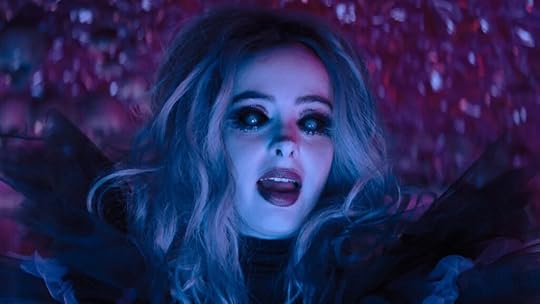 Krysten Ritter in ‘Nightbooks’ (Netflix)8. ‘Nightbooks’ (2021)
Krysten Ritter in ‘Nightbooks’ (Netflix)8. ‘Nightbooks’ (2021)Horror for kids is still horror! In this scary bedtime story come to life, Krysten Ritter stars as a wicked witch who kidnaps a little boy and forces him to write scary bedtime stories. As he digs deeper into her mysterious past, and struggles to come up with new nightmares every day, Ritter vamps it up like nobody’s business, stealing the movie and our poisoned little hearts. Adults probably won’t be frightened by “Nightbooks” but it’s a great introduction to the genre for kids, wisely bridging the gap between fairy tales and serious horror stories, with a little YA world-building thrown in for flavor.
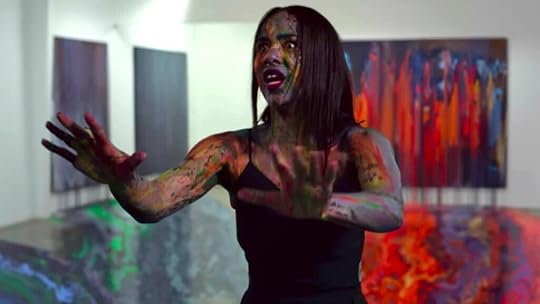 Zawe Ashton in ‘Velvet Buzzsaw’ (Netflix)7. ‘Velvet Buzzsaw’ (2019)
Zawe Ashton in ‘Velvet Buzzsaw’ (Netflix)7. ‘Velvet Buzzsaw’ (2019)Dan Gilroy made an impressive directorial debut with the Oscar-nominated “Nightcrawler,” which starred Jake Gyllenhaal as a creepy weirdo who finds a deadly path to success in Los Angeles. The director and actor reunite in “Velvet Buzzsaw,” an even deadlier story about an even creepier weirdo. Gyllenhaal plays a stuck up art critic who gets involved in a series of mysterious paintings, made by a mad genius, which start to supernaturally devour their way through the snooty art world. “Velvet Buzzsaw” is mostly about people who have their heads stuck up their own ass, so it makes sense that the movie is also pretentious and a little insufferable. But it’s angry at the right things. What a strikingly weird dalliance in the horror genre.
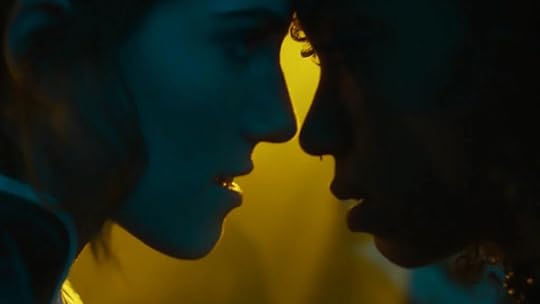 Allison Williams and Logan Browning in ‘The Perfection’ (Netflix)6. ‘The Perfection’ (2019)
Allison Williams and Logan Browning in ‘The Perfection’ (Netflix)6. ‘The Perfection’ (2019)Another freaky fright flick about so-called “high art,” Richard Shepard’s “The Perfection” stars Allison Williams as a concert cellist who left the business to take care of her dying mother. When she returns she finds a new wunderkind, played by Logan Browning, and they become lovers. That’s when things get hallucinogenic, and a little self-mutilate-y, before revealing what “The Perfection” was really about all along. Let’s not spoil that. Shepard’s film is upsettingly bleak and should probably come with no small number of content warnings, but it’s fascinatingly pissed-off cinema, and it’s scary as hell.
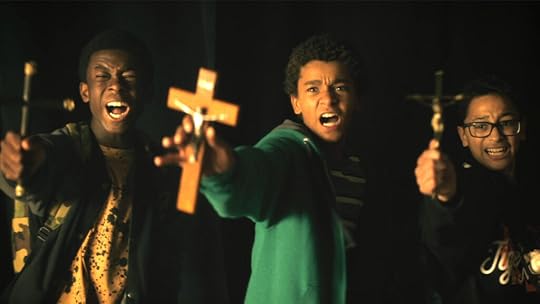 (Netflix)5. ‘Vampires vs. The Bronx’ (2020)
(Netflix)5. ‘Vampires vs. The Bronx’ (2020)Every generation should have it’s own “The Lost Boys,” and “Vampires vs. the Bronx” is a damn good “The Lost Boys.” The film takes place in the Bronx — naturally — where a mysterious company has been buying up all the real estate, gentrifying the hell out of the neighborhood, and murdering any property owners giving them trouble. Oh yeah, and they’re vampires. A group of teenagers, whose expertise in vampires is limited to what they learned from the movie “Blade,” have to band together and save their neighborhood in more ways than one. Smart, funny, excellent teen horror. It should already be a cult hit, but give it a few more years. It’ll get there.
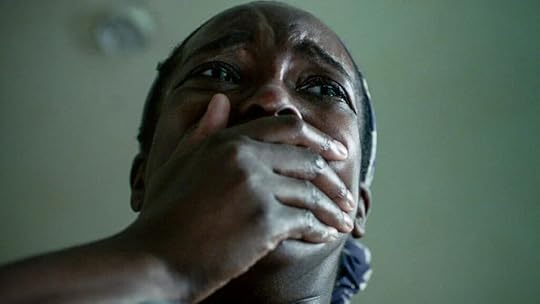 Wunmi Mosaku in ‘His House’ (Netflix)4. ‘His House’ (2020)
Wunmi Mosaku in ‘His House’ (Netflix)4. ‘His House’ (2020)The problem with every haunted house movie is… why don’t they just leave the house? Remi Weekes’ powerful supernatural thriller has one of the best answers on record. The residents — played by Sope Diris, and Wunmi Mosaku from ‘Sinners’ — are immigrants in free government housing, and if they leave they’ll be deported back to their war-torn country. So they’re trapped in a ramshackle house with their regrets, their pain, and a night witch, which promises to bring their dead daughter back to life in exchange for something horrible. Few modern horror movies have protagonists this haunted, and both Dirisu and Mosaku act the hell out of their powerful parts.
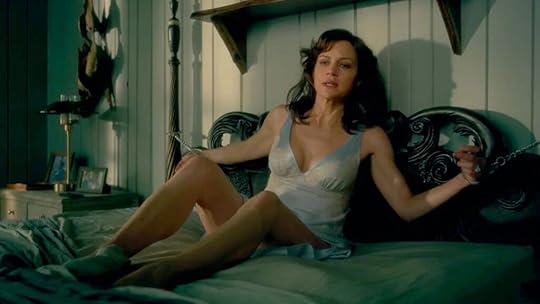 Carla Gugino in ‘Gerald’s Game’ (Netflix)3. ‘Gerald’s Game’ (2017)
Carla Gugino in ‘Gerald’s Game’ (Netflix)3. ‘Gerald’s Game’ (2017)Mike Flanagan’s first adaptation of a Stephen King novel — before he got around to “Doctor Sleep” and “The Life of Chuck” — is this claustrophobic and vicious thriller, starring Carla Gugino as a woman whose husband, played by Bruce Greenwood, tries to rekindle their sexual relationship. So he handcuffs her to the bed and… promptly dies of a heart attack. He used real handcuffs, the bed is sturdy as hell, and she’s in the middle of nowhere, with no phone in sight. So begins a terrifying story of self-reliance, as she relives her past in a frantic urge to either come up with an escape plan, come to terms with her horrible life, or both. Gugino gives an all-timer performance and Flanagan proved, not for the last time, that he gets Stephen King as well, or better, than any other filmmaker ever has.
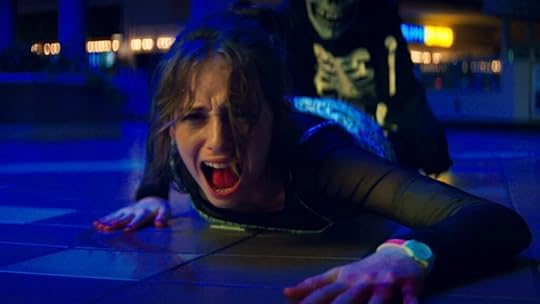 Maya Hawke in ‘Fear Street’ (Netflix)2. ‘Fear Street’ (2021)
Maya Hawke in ‘Fear Street’ (Netflix)2. ‘Fear Street’ (2021)Who would have thought than an R.L. Stine adaptation would become one of the most ambitious Netflix movies on record? Leigh Janiak directs not one, but three interconnected horror movies about queer teens in Shadyside, a town where an ancient evil has been possessing citizens and turning them into mass murderers for hundreds of years. The first volume is inspired by 1990s slasher flicks, the second (and best) is based on summer camp horror classics, and the third installment takes us into the distant past with a folk horror vibe. Inspired, inventive filmmaking with a fantastic cast of characters and rip-roaring entertainment value. (The fourth installment, “Fear Street: Prom Queen,” is a modest slasher with some fun kills, but it doesn’t a candle to the original trilogy.)
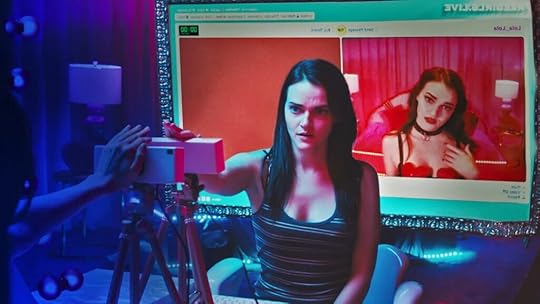 Madeline Brewer in ‘Cam’ (Netflix)1. ‘Cam’ (2018)
Madeline Brewer in ‘Cam’ (Netflix)1. ‘Cam’ (2018)Daniel Goldhaber’s directorial debut is one of the best and most respectful films made about modern sex work, and it’s also a terrifying supernatural thriller about online identity. Madeline Brewer stars as a camgirl whose content involves a creepy horror influence. One day she realizes she can’t log into her account, because she’s already online and streaming. Except, of course, that’s not her on camera — or is it? Paranoia and the uncanny swirl to a dizzying degree, and eventually force our protagonist to take matters into her own hands and reclaim what the internet has taken from her. The kind of horror movie that literally couldn’t have been made a few decades ago, “Cam” is a truly modern classic.
The post The 13 Best Netflix Original Horror Movies, Ranked appeared first on TheWrap.
Steve Pond's Blog




